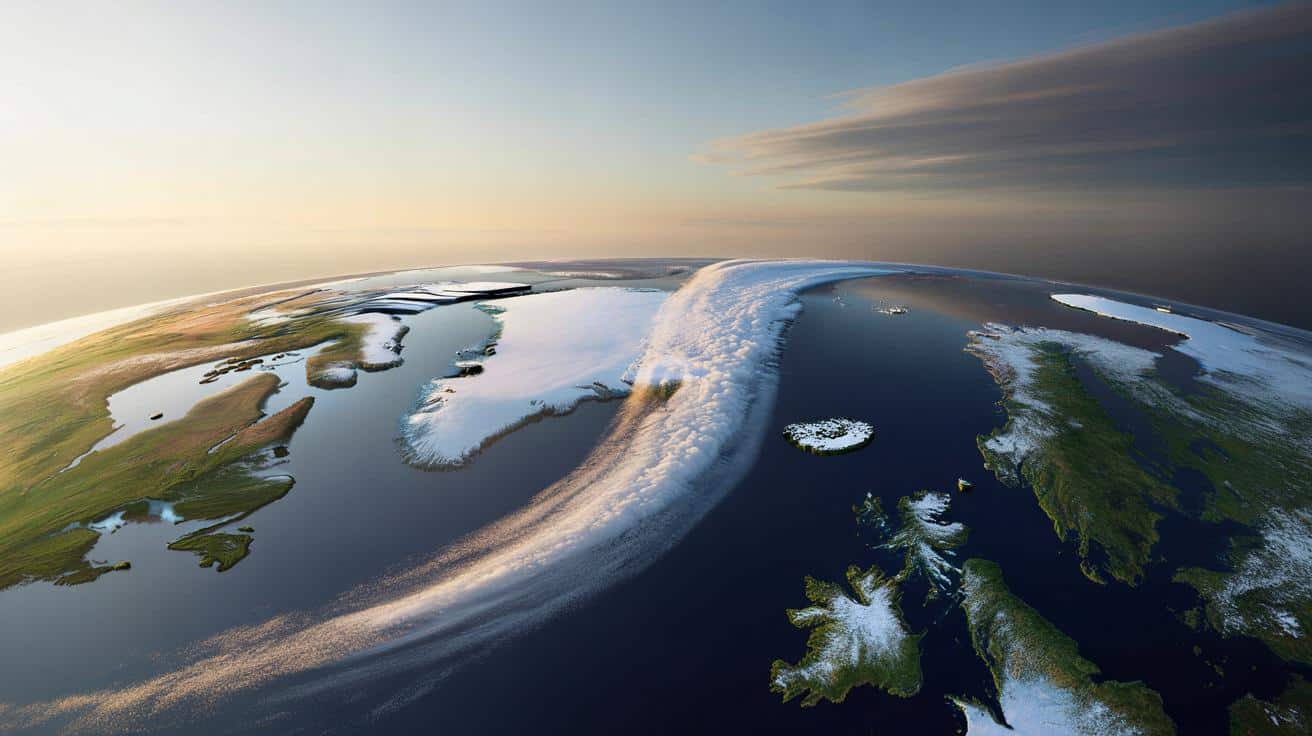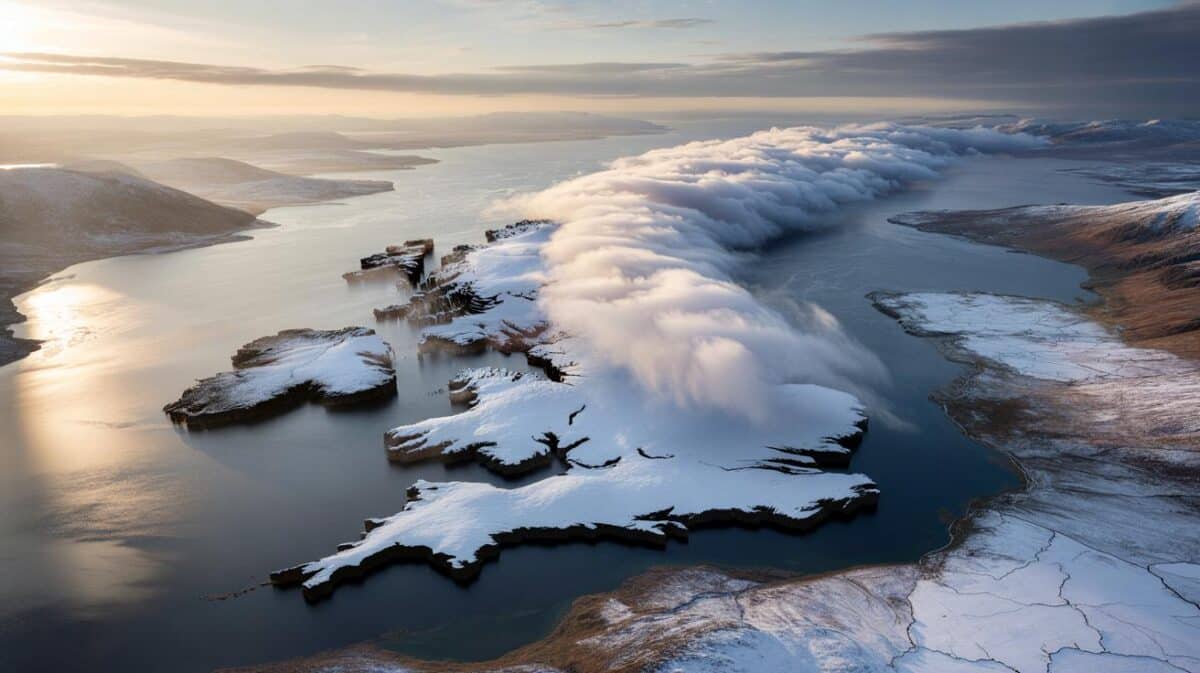The UK could catch a cold snap if the jet bows.
The Arctic’s Polar Vortex usually keeps deep cold locked close to the pole. When it weakens, that cold can spill south and reshape winter. Forecasts now point to an unusually early Sudden Stratospheric Warming, a classic trigger for disruption higher up that can ripple down to the weather we feel at ground level.
Model guidance signals the peak of this disturbance late in the month with warming high above the pole near the 10 mb level around 30 km. Temperatures in the mid‑stratosphere are projected to spike by nearly 40 C above normal, and winds could even flip direction at altitude. If that reversal happens, it would rank among the earliest events on record for the 2025 to 2026 season. Curiosity is building.
What the polar vortex shake-up could mean for UK weather this December
When warming swells in the stratosphere, pressure builds over the pole and the jet stream tends to meander. That pattern often displaces low pressure from the eastern United States across the North Atlantic into Europe, a setup that can open the door to Arctic air. Composite studies after past events show high pressure over the pole with storm tracks shunted to the flanks.
Signals from this event are already showing up lower down. Forecasts indicate a marked drop in winds at the base of the stratosphere near 100 mb around 16 km, a sign that the disturbance is sinking. Impacts at the surface often follow within 5 to 10 days once that downward coupling begins, so early to mid December is the window to watch for changes in the UK.
History offers nuance. Only three comparably early warmings appear in the past 70 years, in 1958, 1968 and 2000. Those were followed by widespread cold across Canada and much of the United States, while Europe saw a weaker response with cooling mainly over northern and north‑central areas. For Britain, outcomes hinge on where North Atlantic low pressure sits. If that trough digs a little farther south, colder air can reach Scotland first, then parts of England and Wales.
The early sudden stratospheric warming on the 26th and why it is rare
Guidance clusters around a peak disruption near the 26th. Maps of the mid‑stratosphere show a dominant high pressure cell sometimes called an anti‑vortex pressing against the core of the Polar Vortex and distorting it. The pressure anomaly squeezes the circulation and slows the vortex winds. One forecast even nudges winds through the zero line aloft, the threshold meteorologists use to classify a major event.
The warmth aloft looks remarkable for the time of year with anomalies close to 40 C above average at 10 mb. Few events of this magnitude arrive this early. If the reversal verifies, it would be the earliest on record. Even without a full reversal, a disrupted vortex often proves enough to alter the pattern near the surface.
Past November events give useful context. December that followed trended strongly colder over the central and eastern United States, while Europe’s signal stayed patchy. That does not lock in a mild UK outcome though. The 2025 to 2026 setup already shows a quick downward response, which increases the chance of pattern change in our neighbourhood. The signal still need watching.
Cold, snow and the jet stream shifts to watch in the days ahead
Extended outlooks for early December match what would be expected after a warming of this kind. High pressure builds over the pole while low pressure shifts along with cold air into North America and the eastern hemisphere. Over the Atlantic, that often means a lazier jet stream with room for Arctic air to spill south on the western flank of Scandinavian or Greenland highs.
Model temperature maps for the first half of the month lean decisively cold for the northern, central and eastern United States. For Europe, support concentrates over northern zones with a chance that chill brushes the UK if the main low sets up a touch farther south. Later in December, guidance keeps the northerly supply open into North America, which boosts white Christmas odds there. For Britain, snow prospects remain sensitive to the exact track of lows and the position of blocking highs near Greenland or Scandinavia.
Three signposts will help judge UK risk in real time
- Does a pole‑centred high consolidate while a North Atlantic trough settles farther south, steering colder air towards Scotland and northern England
We also look for a clear drop in lower stratosphere winds around 100 mb and evidence of a displaced vortex on hemispheric charts. If those align, brief northerly blasts become more plausible, with the sharpest chill in the north and frost more widely. If the trough stays farther north, the UK leans milder with brief cooler interludes.
Forecast lead times remain long. Yet this is not a random model fancy. It follows the known playbook of an early Sudden Stratospheric Warming that unsettles the polar circulation. For now, the balance of evidence points to a colder early winter across North America while northern Europe, including parts of the UK, keeps a watching brief for a window of wintry air if the Atlantic pattern slips just a little.









